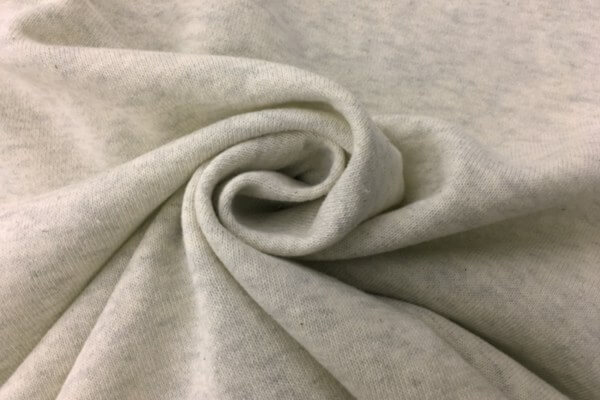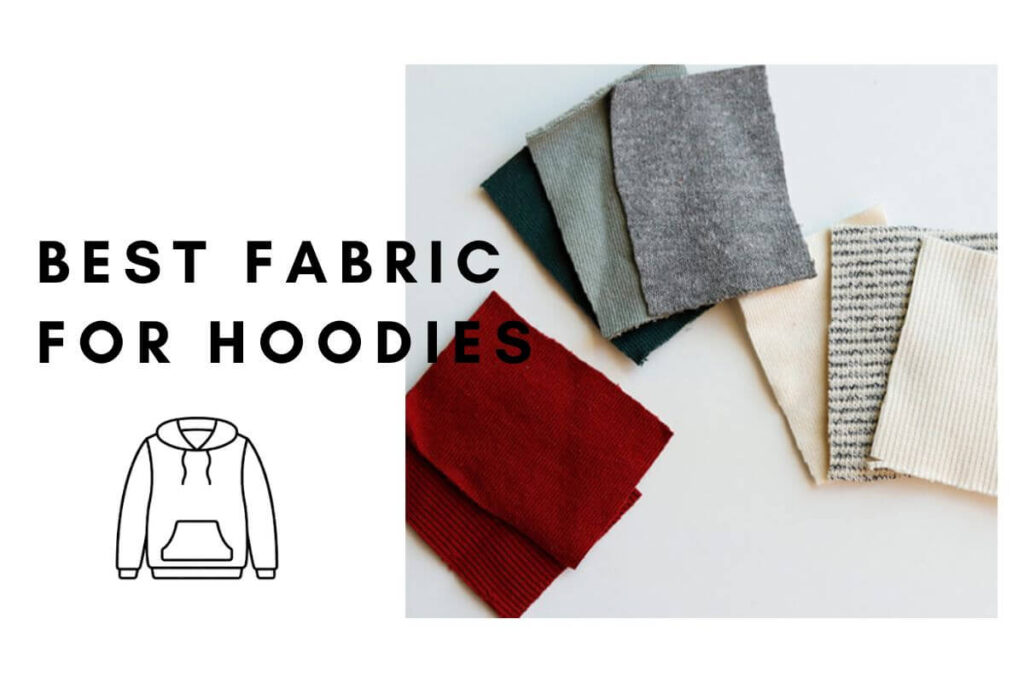No matter what part of the world you’re in, hoodies are a wardrobe staple for everyone. The best hoodies grant wearers maximum comfort to endure cold, rainy days or just lounging around the house, making them versatile additions to any closet, regardless of gender, size, and age.
However, there is one key indicator that determines the quality of your clothing brand’s hoodie: the fabric. Therefore, what you use to make your hoodie is essential to ensure they become your customers’ favorite piece of clothing.
There are several options to choose from when manufacturing your hoodies. So, continue reading to learn which sweatshirt fabric you should choose to create the ultimate hoodie your customers will love.
Factors to Consider in Your Hoodie’s Fabric
Before exploring several potential fabrics for your hoodies, defining what makes the perfect hoodie is important. Some factors to consider include:
Warmth
Although hoodies are incredibly versatile, one of the primary reasons they’re used is for warmth. Before manufacturing your hoodies, you want to ensure you choose a fabric that provides a bundled-up feeling in cold weather.
Flexibility
When it comes to hoodies, most consumers expect their hoodies to be flexible and comfortable. In order to meet that measure, selecting the right fabric is essential, as doing so guarantees a full range of motion for any activity, allowing you to maintain a hoodie’s versatile reputation.
Durability
Another strong indicator of a hoodie’s quality is how well it holds up. Choosing certain fabrics promises superior durability creating garments that withstand numerous conditions and lifestyles. Conversely, weak material will cause the hoodie to fade or pill after just a few wears.
Lifestyle
Though hoodies are one of the most common garments between closets, the reason for wearing them varies. Consider what is most important to your target audience. For example, are they active? Do they wear hoodies casually? Defining the lifestyle you want to enhance is crucial to identifying the best fabric for your hoodies.
Aesthetics
While a hoodie’s practicality certainly has its merits, it’s not the only factor to consider. Many wearers also shop for aesthetics, which fabric plays a significant role in, especially regarding the hoodie’s fit. The right textile will offer ultimate drapability, creating a flattering fit that hugs the shoulders and maintains its shape to avoid excess bagginess. Prioritizing drapability enhances the hoodie’s overall appearance and various styles, so be sure not to overlook it.
Most Common Fabrics For Hoodies
1. Cotton
Cotton is a popular textile found on many pieces of clothing due to its superior breathability and softness. As a fabric made from natural fiber, cotton hoodies strike a balance of cozy and lightweight, ensuring people wearing them won’t get too sweaty.

It’s gentle against the skin, causing little to no irritation. If your brand provides children’s clothing, cotton hoodies guarantee total peace of mind as a result of their safe, non-toxic makeup. Regular hoodie-wearers also prefer cotton’s flexibility and moisture-absorbing qualities for sports activities or gym visits.
2. Fleece
On the other hand, if you want your hoodies to be known for providing long-lasting warmth, fleece is the way to go. Known as a winter fabric, fleece is soft and snuggly to the touch, making it a pleasure to shrug on during cold days without feeling too bulky. In addition, it traps body heat to combat the cold – perfect as a wintertime staple.

However, if you want to provide a lighter alternative, you don’t have to omit fleece from your list of possibilities. Fleece is a synthetic fiber available in a variety of weights that offer more breathability. It’s among the more shrink and stain-resistant textiles, guaranteeing easy maintenance and making it one of the best materials for hoodies, as it never fails to deliver on both functional and fashionable fronts.
3. French Terry

Another sweatshirt material to consider for your hoodies is French terry. This textile is a knitted terry cloth fabric that features soft piles of yarn on one side and a soft, smooth surface on the other. It’s renowned for its many beneficial qualities, including its stretch, and can be folded, pulled, and manipulated without resistance, enabling users to incorporate it into their fitness routines with peace of mind.

French terry is also a midweight fabric; it offers premium breathability and moderate warmth without overheating you, which makes it an appealing option for those who live in warmer climates or want to add a lighter option to their hoodie collection. Its weight is also ideal for layering over t-shirts or under a thicker jacket, as it effortlessly drapes over the body for a flattering fit.
4. Polyester
Polyester is one of the more budget-friendly textiles. It’s a synthetic fiber typically derived from petroleum. Though it’s known as the most widely used fabric, polyester is often cheap quality and unable to withstand frequent uses.

Additionally, it is prone to static buildup, making it a more high-maintenance textile. People will experience less breathability in a polyester hoodie, which is not ideal for those who wear their hoodies to the gym.
5. Wool
Wool fabric is popularly used for sweaters and hoodies due to its ability to regulate body temperature and maintain breathability. It’s a natural, eco-friendly material from the fleece of animals, including sheep, goats, llamas, and more.

However, unlike fleece and french terry fabric, wool is often scratchy, irritating sensitive skin. As a result of its itchy feel, it can be uncomfortable to wear. Additionally, it stains and absorbs scents quickly during daily wear, making maintenance a hassle. Finally, wool is also one of the more expensive textiles, which may put a strain on your brand’s budget.
6. Rayon
Rayon fabric is made from purified cellulose fibers and is considered a semi-synthetic fabric, as it does involve chemical treatment despite being derived from natural materials.

Rayon is lightweight and breathable, effectively absorbing moisture during high-intensity activities. However, it’s not as stretchy and offers little warmth compared to its counterparts, like fleece and french terry. Blending it with spandex should increase the stretchability, but be mindful that it is also prone to shrinking quickly and is less durable when wet.
7. Jersey Knit
Another knit fabric to consider is jersey, which was originally made from wool; however, now, it’s often made from other textiles, such as cotton and cotton blends with synthetics. The right side features a smooth, single-knit rib surface, while the backside is piled with loops.

Jersey knit is stretchy and comfortable for daily wear, its knitted structure giving way to every movement, making it ideal if you’re targeting a more active audience. However, it is notorious for shrinking quickly in the washing machine, resulting in high-maintenance hoodies that require careful washing.
For more information on the best fabric for hoodies, click here.
Where to Manufacture Your Hoodies
The next challenge after determining the best hoodie fabric? Finding the right manufacturer to bring your designs to life. That’s where we come in.
At MGOO, we have years of experience and a breadth of knowledge, making us well-equipped to handle your unique hoodies and surpass your expectations. When you employ our services, you can expect reasonable prices, unparalleled quality, and valuable collaborators. You can learn more about our process here.
To give your customers the hoodies they deserve, click to request a quote and prepare to have hoodies people will be lining up to get their hands on.

